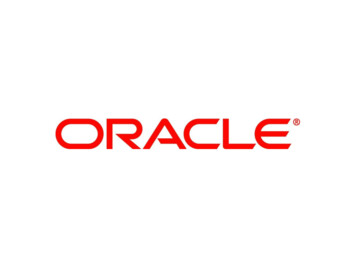
Transcription
1
Insert Picture Here RMAN Configuration and Performance Tuning Best PracticesTimothy ChienPrincipal Product ManagerOracle Database High AvailabilityTimothy.Chien@oracle.com
Agenda Recovery Manager Overview Configuration Best Practices Insert Picture Here – Backup Strategies Comparison– Fast Recovery Area (FRA) Performance Tuning Methodology– Backup Data Flow– Tuning Principles– Diagnosing Performance Bottlenecks Summary/Q&A3
Oracle Recovery Manager (RMAN)Oracle-Integrated Backup & Recovery EngineOracle EnterpriseManagerOracle SecureBackup*RMAN Intrinsic knowledge of databasefile formats and recoveryprocedures Block validation Online block-level recovery Tablespace/data file recovery Online, multi-streamed backup Unused block compression Native encryptionTape Drive Integrated disk, tape & cloudbackup leveraging the FastRecovery Area (FRA) andOracle Secure BackupFast RecoveryAreaDatabaseCloud*RMAN also supports leading 3rd party media managers4
Critical Question to Ask What are my recovery requirements?– Assess tolerance for data loss - Recovery Point Objective (RPO) How frequently should backups be taken? Is point-in-time recovery required?– Assess tolerance for downtime - Recovery Time Objective (RTO) Downtime: Problem identification recovery planning systemsrecovery Tiered RTO: database, tablespace, table, row– Determine backup retention policy Onsite, offsite, long-term Then.how does my RMAN strategy meet thoserequirements?5
Option 1: Full & IncrementalTape Backups Well-suited for:– Databases that can tolerate hours/days RTO– Environments where disk is premium– Low-medium change frequency between backups, e.g. 20% Backup strategy:– Weekly level 0 and daily ‘differential’ incremental backup sets totape, with optional backup compression– Enable block change tracking - only changed blocks are readand written during incremental backup– Archived logs are backed up and retained on-disk, as needed .Archived LogsLevel 0 (full)Archived LogsLevel 1 (incremental)6
RMAN Script Example Configure SBT (i.e. tape) channels:– CONFIGURE CHANNEL DEVICE TYPE SBT PARMS' channel parameters '; Weekly full backup:– BACKUP AS BACKUPSET INCREMENTAL LEVEL 0DATABASE PLUS ARCHIVELOG; Daily incremental backup:– BACKUP AS BACKUPSET INCREMENTAL LEVEL 1DATABASE PLUS ARCHIVELOG;7
Option 2: Incrementally UpdatedDisk Backups Well-suited for:– Databases that can tolerate no more than a few hours RTO– Environments where disk can be allocated for 1X size ofdatabase or most critical tablespaces Backup strategy:– Initial image copy to FRA, followed by daily incremental backups– Roll forward copy with incremental, to produce new on-disk copy– Full backup archived to tape, as needed– Archived logs are backed up and retained on-disk, as needed– Fast recovery from disk or SWITCH to use image copiesArchived LogsLevel 0 (full) archive to tapeArchived LogsLevel 1Archived Logs .Roll forward image copy Level 18
RMAN Script Example Configure SBT channels, if needed:– [CONFIGURE CHANNEL DEVICE TYPE SBT PARMS ' channelparameters ';] Daily roll forward copy and incremental backup:– RECOVER COPY OF DATABASE WITH TAG 'OSS';– BACKUP DEVICE TYPE DISK INCREMENTAL LEVEL 1 FORRECOVER OF COPY WITH TAG 'OSS' DATABASE;– [BACKUP DEVICE TYPE SBT ARCHIVELOG ALL;] What happens?– First run: Image copy– Second run: Incremental backup– Third run : Roll forward copy & create new incremental backup Backup FRA to tape, if needed:– [BACKUP RECOVERY AREA;]9
Insert Picture Here Fast Recovery withRMAN SWITCH Demo10
Option 3: Use Data GuardOffload Backups to Physical Standby Well-suited for:– Databases that require no more than several minutes of recoverytime, in event of any failure– Environments that can preferably allocate symmetric hardware andstorage for physical standby database– Environments whose tape infrastructure can be shared betweenprimary and standby database sites Backup strategy:– Full & incremental backups offloaded to physical standby database– Fast incremental backup on standby with Active Data Guard– Backups can be restored to primary or standby database Backups can be taken at each database for optimal localprotection11
Comparison: Backup StrategiesStrategyBackup FactorsRecovery FactorsOption 1: Full &Incremental TapeBackups Fast incrementals Save space with backupcompression Cost-effective tapestorage Full backup restored first,then incrementals &archived logs Tape backups readsequentiallyOption 2: IncrementallyUpdated Disk Backups Incremental roll forwardto create up-to-date copy Requires 1X productionstorage for copy Optional tape storage Backups read via randomaccess Restore-free recoverywith SWITCH commandOption 3: OffloadBackups to PhysicalStandby Database Above benefits primarydatabase free to handlemore workloads Requires 1X productionhardware and storage forstandby database Fast failover to standbydatabase in event of anyfailure Backups are last resort, inevent of double sitefailure12
Fast Recovery Area (FRA) Sizing If you want to keep:– Control file backups and archived logs Estimate total size of all archived logs generated betweensuccessive backups on the busiest days x 2 (in case ofunexpected redo spikes)– Flashback logs Add in {Redo rate x Flashback retention target time x 2}– Incremental backups Add in their estimated sizes– On-disk image copy Add in size of the database minus size of temporary files– Further details: http://download.oracle.com/docs/cd/E11882 01/backup.112/e10642/rcmconfb.htm#i101921113
FRA File Retention / Deletion Policies When FRA space needs exceed quota, automatic file deletion occursin the following order:1. Flashback logs Oldest Flashback time can be affected (with exception of guaranteed restorepoints)2. RMAN backup pieces/copies and archived redo logs that are: Not needed to maintain RMAN retention policy, or Have been backed up to tape (via DEVICE TYPE SBT) or secondary disk location(via BACKUP RECOVERY AREA TO DESTINATION ‘.’) If archived log deletion policy is configured as:– APPLIED ON [ALL] STANDBY Archived log must have been applied to mandatory or all standby databases– SHIPPED TO [ALL] STANDBY Archived log must have been transferred to mandatory or all standby databases– BACKED UP N TIMES TO DEVICE TYPE [DISK SBT] Archived log must have been backed up at least N times– If [APPLIED or SHIPPED] and BACKED UP policies are configured, both conditionsmust be satisfied for an archived log to be considered for deletion.14
Insert Picture Here Performance TuningMethodology RMAN Backup Data Flow Performance Tuning Principles Diagnosing Performance Bottlenecks15
RMAN Backup Data FlowA. Prepare backup tasks & read blocks into input buffersB. Validate blocks & copy them to output buffers–Compress and/or encrypt data if requestedC. Write output buffers to storage media (DISK or SBT)–Media manager handles writing of output buffers to SBTWrite to storage mediaOutput I/O BufferRestore is inverseof data flow.16
Tuning Principles1. Determine the maximum input disk, output media, and networkthroughput–E.g. Oracle ORION http://download.oracle.com/docs/cd/E11882 01/server.112/e16638/iodesign.htm#CACJEEDI– Evaluate network throughput at all touch points, e.g. database server- media management environment - tape system (ref. TCP/IPperformance measurement tools such as qperf)2. Configure disk subsystem for optimal performance––Use ASM: typically, separate DATA and FRA disksIf not using ASM, stripe data files across all disks with 1 MB stripe size17
Tuning Principles contd.3. Tune RMAN to fully utilize disk subsystem and tape– Verify asynchronous I/O supported by platform, otherwise: Disk backup: set DBWR IO SLAVES Tape backup: set BACKUP TAPE IO SLAVES unless media manager statesotherwise– Disk backup: allocate as many channels as can be handled by system For image copies, one channel processes one data file at a time– Tape backups: allocate one channel per tape drive Note: Restore time will degrade with higher number of channels per tapedrive, due to tape-side multiplexing (which leads to interleaving of disjointbackup sets in the same tape) With higher number of channels, if read phase time (determined by BACKUPVALIDATE)––Decreases (vs. same number of channels), bottleneck is in read phase:ref. next slideStays the same, bottleneck is most likely in media manager: ref. Slide 2718
Read Phase TuningRMAN Multiplexing Multiplexing level: max number of files read by onechannel, during backup - controlled by:––FILESPERSET [default: 64] parameter of the BACKUPcommand: how many datafiles to put in each backup setMAXOPENFILES [default: 8] parameter of ALLOCATECHANNEL or CONFIGURE CHANNEL: how many datafilesRMAN can read from simultaneously. Multiplexing level: Min (MAXOPENFILES,FILESPERSET)–Determines number and size of input buffers inV BACKUP ASYNC IO/V BACKUP SYNC IO–All buffers allocated from PGA, unless disk or tape I/Oslaves are enabled If slaves are enabled, all buffers allocated from SGA orLARGE POOL (if set)19
Read Phase Tuning contd.RMAN Input Buffers For ASM or striped system:– MAXOPENFILES 1 16 buffers/file, 1 MB/buffer 16 MB/file– Allows largest number and sized buffers by default– Additional multiplexing not needed, since files are striped For non-striped system:– MAXOPENFILES 8 4 buffers/file, 512 KB/buffer 2 MB/file– Reduce the number of input buffers/file to more effectivelyspread out I/O usage (since each file resides on one disk)20
Tuning Principles contd.4. If BACKUP VALIDATE still does not utilize available disk I/O & there isavailable CPU and memory:–Increase RMAN buffer memory usage With Oracle Database 11g Release 11.1.0.7 or lower versions Set BACKUP KSFQ BUFCNT (default 16) # of input disks– Number of input buffers per file– Achieve balance between memory usage and I/O Set BACKUP KSFQ BUFSZ (default 1048576) stripe size (in bytes) With Oracle Database 11g Release 2 Set BACKUP FILE BUFCNT, BACKUP FILE BUFSZ Restore performance can increase with setting these parameters, asoutput buffers used during restore will also increase correspondingly Refer to Support Note 1072545.1 for more details Note: With Oracle Database 11g Release 2 & ASM, all buffers areautomatically sized for optimal performance21
RMAN Backup Data FlowA. Prepare backup tasks & read blocks into input buffersB. Validate blocks & copy them to output buffers–Compress and/or encrypt data if requestedC. Write output buffers to storage media (DISK or SBT)–Media manager handles writing of output buffers to SBTWrite to storage mediaOutput I/O Buffer22
Tuning Principles contd.5. RMAN backup compression & encryption guidelines– Both operations depend heavily on CPU resources– Increase CPU resources or use LOW/MEDIUM setting– Verify that uncompressed backup performance scales properly, aschannels are added– For encryption: TDE column encryption–For encrypted backup, data is double encrypted (i.e. encrypted columnstreated as if they were not encrypted) TDE tablespace encryption––For compressed & encrypted backup, encrypted tablespaces aredecrypted, compressed, then re-encryptedIf only encrypted backup, encrypted blocks pass through backupunchanged23
Tuning Principles contd.6. Tune RMAN output buffer size– Output buffers blocks written to DISK as copies or backup piecesor to SBT as backup pieces– Four buffers allocated per channel– Default buffer sizes DISK: 1 MB SBT: 256 KB– Adjust with BLKSIZE channel parameter– Set BLKSIZE media management client buffer size– No changes needed for Oracle Secure Backup Output buffer count & size for disk backup can be manually adjusted– Details in Support Note 1072545.1 - RMAN Performance Tuning Using BufferMemory Parameters– Note: With Oracle Database 11g Release 2 & ASM, all buffers areautomatically sized for optimal performance24
Insert Picture Here Performance TuningMethodology RMAN Backup Data Flow Performance Tuning Principles Diagnosing Performance Bottlenecks25
Diagnosing Performance BottlenecksPart – 1 Query V BACKUP ASYNC IO– Check EFFECTIVE BYTES PER SECOND column (EBPS) forrow where TYPE 'AGGREGATE'– If EBPS storage media throughput, run BACKUP VALIDATE Case 1: BACKUP VALIDATE time actual backup time,then read phase is the likely bottleneck– Refer to RMAN multiplexing and buffer usage guidelines– Investigate ‘slow’ performing files: find data file with highest(LONG WAITS / IO COUNT) ratio If ASM, add disk spindles and/or re-balance disks Move file to new disk or multiplex with another ‘slow’ file26
Diagnosing Performance BottlenecksPart – 2 Case 2: If BACKUP VALIDATE time actual backup time, thenbuffer copy or write to storage media phase is the likely bottleneck Refer to backup compression and encryption guidelinesIf tape backup, check media management (MML) settings–––––TCP/IP buffer sizeMedia management client/server buffer sizeClient/socket timeoutMedia server hardware, connectivity to tapeEnable tape compression (but not RMAN compression)27
Restore & Recovery PerformanceBest Practices Minimize archive log application by using incremental backupsUse block media recovery for isolated block corruptionsKeep adequate number of archived logs on diskIncrease RMAN buffer memory usageTune database for I/O, DBWR performance, CPU utilizationRefer to MAA Media Recovery Best Practices paper– Active Data Guard 11g Best Practices (includes best practices forRedo Apply)28
SummaryEffective RMAN Backup & Restore Strategy1. Recovery & business requirements drive the choice– Disk?– Tape?– Data Guard?2. RMAN tuning: find bottleneck at each phase & remove it– Read blocks into input buffers (memory, disk I/O)– Copy to output buffers (CPU, compression, encryption)– Write to storage media (memory, I/O, media management, HW config)3. Know your media management product and tape configuration– What matters is the end-to-end throughput!29
30
31
2. RMAN backup pieces/copies and archived redo logs that are: Not needed to maintain RMAN retention policy, or Have been backed up to tape (via DEVICE TYPE SBT) or secondary disk location (via BACKUP RECOVERY AREA TO DESTINATION ‘.’) If archived log de



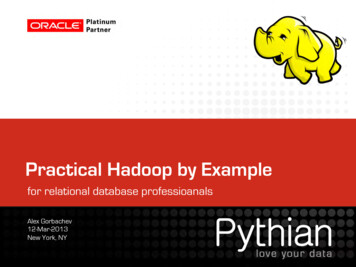

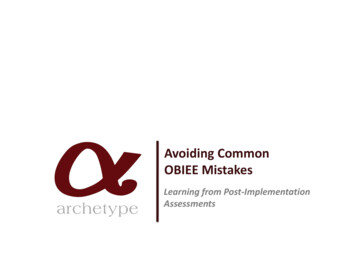
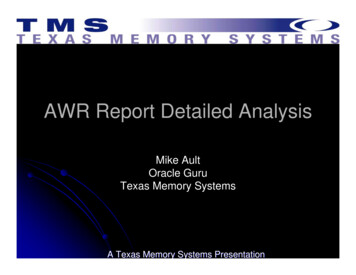
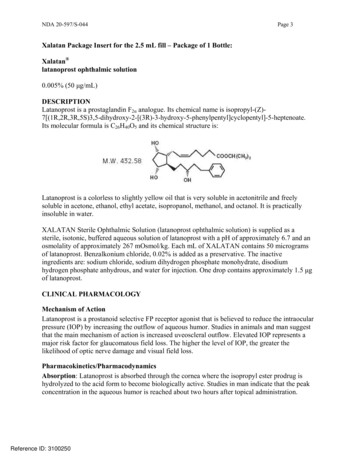


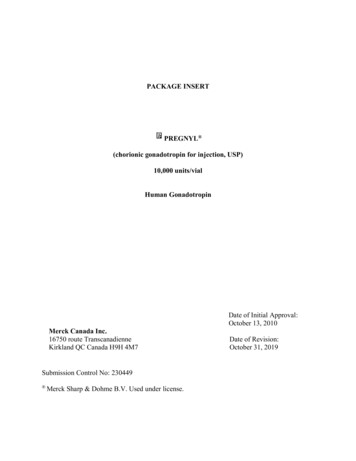
![[Insert Logos] Creating a New National Leader in Adult .](/img/10/ir-deck-for-ndrs-meetings-3-9-17-final.jpg)